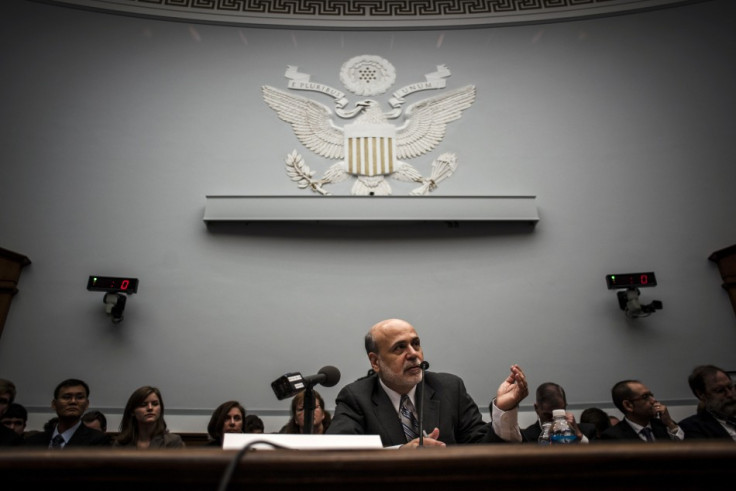Federal Reserve Sticks with US Bond-Buying Stimulus Plan [VIDEO]

The US Federal Reserve has surprised economists by announcing it will stay the course and not start paring back its $85bn-a-month bond-buying stimulus.
On 18 September, the world's most powerful central bank defied market consensus and decided against reducing its massive monthly asset buys as the current pace of economic growth in the US did not justify tapering monetary stimulus.
In addition, Fed Chairman Ben Bernanke refused to clarify whether the Fed would taper its bond purchases at all this year. Instead, he asserted that the programme was "not on a preset course."
In June, Bernanke said the Fed could begin pruning its asset buys later this year if the US economy continued to improve, as officials expect it to, and could end its purchases by mid-2014.
The Fed repeated it would hold the federal funds rate at zero to 0.25% for as long as the unemployment rate remains above its 6.5% threshold, provided the outlook for inflation between one and two years ahead was not projected to rise above 2.5%.
The US jobless rate stood at 7.3% in August.
The news boosted investor sentiment the world over. Stock markets across Asia rallied following the Fed's decision. Earlier, on Wall Street, the Dow and the S&P 500 indices finished at record highs.
The Fed also lowered its 2013 US economic growth forecast to a 2%-2.3% range, from June's estimate of 2.3%-2.6%.
Bernanke refused to comment on when he would step down from the Fed chairmanship, saying he hoped to have more information soon.
Market Consensus
Market players had expected the Fed to start paring back its bond-buying programme after the September meeting of its policymakers. Financial data showed that the world's leading economy was improving, suggesting that it was ready for a monetary stimulus cutback.
"Economic activity [in the US] has been expanding at a moderate pace. Some indicators of labor market conditions have shown further improvement in recent months, but the unemployment rate remains elevated," according to a Federal Reserve statement.
"Household spending and business fixed investment advanced, and the housing sector has been strengthening, but mortgage rates have risen further and fiscal policy is restraining economic growth. Apart from fluctuations due to changes in energy prices, inflation has been running below the [Federal Open Market Committee's] longer-run objective, but longer-term inflation expectations have remained stable.
"The [policy-setting FOMC] decided to await more evidence that progress will be sustained before adjusting the pace of its purchases."
Bernanke told a news conference that "there is no fixed calendar schedule. I really have to emphasize that. If the data confirm our basic outlook, if we gain more confidence in that outlook ... then we could move later this year."
Loosening Policy
The Fed cut interest rates to almost zero in late 2008, at the height of the financial crisis.
Since then, it has more than tripled the size of its balance sheet to around $3.6tn through three massive rounds of bond-buying, designed to hold down longer-term borrowing costs.
The central bank's moves stimulated the US economy and global markets in the years following the financial crisis.
The US economy expanded 1.7% in the second-quarter, beating expectations of a 1% expansion. It logged a 1.1% growth rate in the first quarter.
© Copyright IBTimes 2024. All rights reserved.






